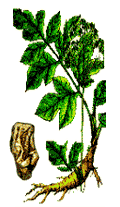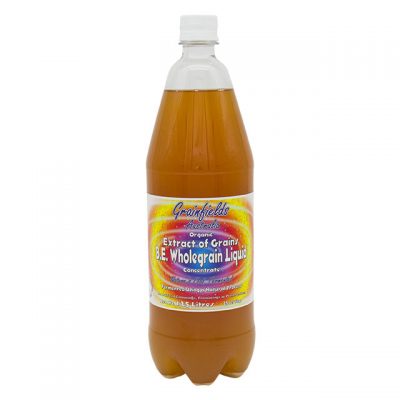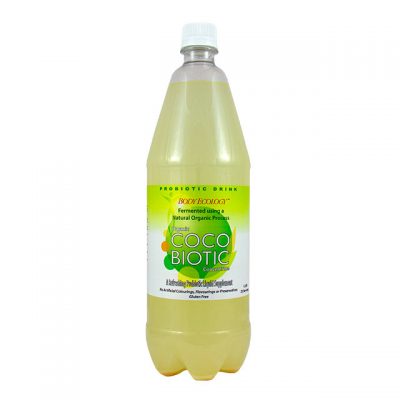The known utilisation of herbs extends over some 5000 years, starting with the ancient Egyptian, Chinese, and Indian civilisations. Up until reasonably modern times they were expensive items, sometimes the equivalent of precious metals. Herbs were highly regarded in the Greek and Roman Empires, members of the lattter being responsible for carrying these commodities to the rest of Europe. The search for direct trade routes to the spice-producing areas of the East and India produced some great voyages of exploration, e.g. Columbus and Vasco da Gama in the fifteenth century. In the seventeenth and eighteenth centuries the possession of spice areas in the East led to wars among the Portuguese, Dutch, and British.
Herbs have served many functions according to the historical period such as embalming, medical uses, the masking of bad food and body odour, the enhancing of food flavour, and food preservation (because of antioxidant and antimicrobial properties). The aroma and flavour of a herb relates mainly to its essential (volatile) oil, which is a complex mixture of organic compounds (e.g. alcohols, aldehydes, and esters). In food products, spices or herbs may be used in their entire or powdered states. Much use is also made of the essential oil, produced by distillation, and ‘oleoresins’ which are organic solvent extracts of the herb, containg certain other constituents in addition to the essential oil.
Dong quai
Dong quai is classified as Angelica sinensis.
 Dong quai is an aromatic herb that grows in China, Korea, and Japan. This herb is often referred to as Chinese Angelica or Dong Quai, pronounced ‘Dong Kwy’, its other common names include Dang Gui and Tang Kuei. As the Latin name suggests, this herb is related to the Angelica species which are all members of the Carrot family. In its native country, China, Dong Quai is the next best selling herb to Licorice, where millions of women are reputed to take it every day. The term ‘female ginseng’ is often used when referring to Dong Quai.
Dong quai is an aromatic herb that grows in China, Korea, and Japan. This herb is often referred to as Chinese Angelica or Dong Quai, pronounced ‘Dong Kwy’, its other common names include Dang Gui and Tang Kuei. As the Latin name suggests, this herb is related to the Angelica species which are all members of the Carrot family. In its native country, China, Dong Quai is the next best selling herb to Licorice, where millions of women are reputed to take it every day. The term ‘female ginseng’ is often used when referring to Dong Quai.
The whole root of the plant is used. Dong quai contains vitamins E, A and vitamin B (nictonic acid, folic acid, vitamin B12). Researchers have isolated at least six coumarin derivatives. The essential oil in dong quai contains Ligustilide, butylphthalide and numerous other minor components. Ferulic acid and various polysaccharides are also found in dong quai’s root.
Ginger
Ginger is classified as Zingiber officinale.
 Ginger, consists of the fresh or dried roots of Zingiber officinale. The English botanist William Roscoe (1753-1831) gave the plant the name Zingiber officinale in an 1807 publication. The ginger family is a tropical group especially abundant in Indo-Malaysia, consisting of more 1200 plant species in 53 genera. The genus Zingiber includes about 85 species of aromatic herbs from East Asia and tropical Australia. The name of the genus, Zingiber, derives from a Sanskrit word denoting “horn-shaped,” in reference to the protrusions on the rhizome.
Ginger, consists of the fresh or dried roots of Zingiber officinale. The English botanist William Roscoe (1753-1831) gave the plant the name Zingiber officinale in an 1807 publication. The ginger family is a tropical group especially abundant in Indo-Malaysia, consisting of more 1200 plant species in 53 genera. The genus Zingiber includes about 85 species of aromatic herbs from East Asia and tropical Australia. The name of the genus, Zingiber, derives from a Sanskrit word denoting “horn-shaped,” in reference to the protrusions on the rhizome.
The ginger plant is an erect perennial growing from one to three feet in height. The stem is surrounded by the sheathing bases of the two-ranked leaves. A club-like spike of yellowish, purple-lipped flowers have showy greenish yellow bracts beneath. Unfortunately, ginger rarely flowers in cultivation. The ginger of commerce consists of the thick scaly rhizomes (underground stems) of the plant. They branch with thick thumb-like protrusions, thus individual divisions of the rhizome are known as “hands.”
The dried rhizome of ginger contains approximately 1–4% volatile oils. These are the active constituents of ginger, and they are also responsible for ginger’s characteristic odor and taste. The aromatic principles include zingiberene and bisabolene, while the pungent principles are known as gingerols and shogaols.
Ginger in History
It has been cultivated for so long that its exact origin is unclear. Cultivated for millennia in both China and India, it reached the West at least two thousand years ago, recorded as a subject of a Roman tax in the second century after being imported via the Red Sea to Alexandria. Tariff duties appear in the records of Marseilles in 1228 and in Paris by 1296. Ginger is known in England before the Norman Conquest, as it is commonly found in the 11th century Anglo-Saxon leech books. Ginger is detailed in a 13th century work, “Physicians of Myddvai,” a collection of recipes and prescriptions written by a physician, Rhiwallon, and his three sons, by mandate of Rhys Gryg, prince of South Wales (who died in 1233). By the 13th and 14th centuries it was familiar to English palates, and next to pepper, was the most popular spice. A pound of ginger was then valued at the price of one sheep. Ginger, as a product of the Far East, was indelibly imprinted on the taste buds of Westerners before potatoes, tomatoes, and corn were even known to exist by Europeans.
In China, ginger is mentioned in the earliest of herbals. Dried ginger is first mentioned in Shen Nong Ben Cao Jing, attributed to the Divine Plowman Emperor, Shen—Nong, who lived about 2,000 BC. Fresh ginger was first listed in Ming Yi Bie Lu (Miscellaneous Records of Famous Physicians) and Ben Cao Jing Ji Zhu (Collection of Commentaries on the Classics of Materia Medica) both attributed to Tao Hong—jing, published during the dynasties of the North and South Kingdoms around the year 500 AD.
Fresh ginger and dried ginger are considered two different commodities. In fact, one author of an early ben cao (Chinese herbal) felt that they were so different that they must come from two different plants! The dried root is known as Gan-jiang. The fresh root is called Sheng-jiang.
Maca Root
Maca root contains high amounts of minerals, vitamins, enzymes and all of the essential amino acids. Is rich in B-vitamins, which are the energy vitamins, and maca is a vegetarian source of B-12, has high levels of bioavailable calcium and magnesium. Maca root helps balance the hormones and stimulate and nourish the hypothalamus and pituitary glands.
Turmeric
A yellow spice that has been used in Ayurvedic and Chinese medicines throughout history. It contains curcumin which is a powerful anti-inflamatory and antioxidant. The benefits of curcumin have been well documented in Western medicine literature and research.




